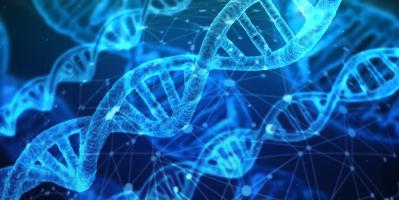The in vitro mutagenicity assay – THE AMES TEST

Mutagen agents are all those substances that cause modifications in the DNA sequence and that potentially could determine an alteration of the genetic information, bringing a higher cancer risk.
We prefer the term “agents” and not “substances” since different mutagens exist, physical, biological, and chemical mutagens. Chemical mutagens includes several categories, such as solvents (e.g. benzene), dyes (e.g. aromatic amines), heavy metals (e.g. hexavalent chromium compounds), substances contained in cigarette smoke, but also substances of natural origin we can find in food (e.g. aflatoxin B1).
The classification in this area is established by several recognised bodies among which: EU (CLP Regulation), IARC, ACGIH, EPA, and NTP. In this article, we will refer to the in-force legislation by the EU.
European Union’s CLP Regulation (Classification, Labelling and Packaging) (CE Regulation n. 1272/2008) imposes that all chemical products marketed showing mutagenic or cancerogenic activity should report on the label or the MSDS a code indicating danger (H340 for mutagens and H350 for cancerogenic substances) and a pictogram alerting consumers. The Regulation also defines concentration limits determining the classification of a mixture.
ASSESSMENT OF MUTAGENIC ACTIVITY
The mutagenic activity of a molecule can be assessed in the laboratory through in vitro tests using cells or tissues. One of the most used assays is the Ames test, created in 1973 by the American biochemist Bruce Nathan Ames, which is performed by exposing a bacterial culture to the agent to be detected.
The principle assumes that DNA structure is the same in every living organism, so it is possible to use even simple organisms, such as bacteria, to rapidly detect mutagens, without the necessity of using mammals as test subjects.
The assay provides the use of auxotrophic microorganisms, that are not able to perform biosynthesis of an essential amino acid for their survival. The test target is to quantify how much the analysed chemical compound can induce a mutation allowing these bacteria to regain their ability to grow in an environment free from that vital substance, and so to synthesise the amino acid that was missing. Normally Salmonella Typhimurium strains are used showing a deficit in the Histidine (His) amino acid biosynthetic pathway, and auxotrophic Escherichia Coli strains for the Tryptophane (Trp) amino acid. That way bacteria are not able to proliferate in media free from the relevant amino acid. If the substance to be assessed is mutagenic, it will induce a mutation and bacteria regain their ability to synthesise the amino acid needed for their growth so they can proliferate in a medium that is devoid of it. From auxotrophic bacteria, they become prototrophic bacteria.
In the past, the test was performed using solid culture media on which mutated microorganisms were grown. A cotton disc was placed in the middle of the plate and soaked in with the substance to be tested. After 48h incubation, scientists evaluated the halo of inhibition of cell growth.
If the molecule was mutagenic, bacteria underwent a mutation (reversion) in the concerned gene, allowing bacteria to synthesise the amino acid and so leading the culture to survive.
Currently, due to the huge increase in the number of substances requiring this kind of analysis, much more rapid tests have been developed than the classic Ames test, such as AMES TEST MFP (Micro Plate Format) which remains faithful to the classic test principles, but also offers many advantages such:
- Controlled bacteria strains
- Velocity or Simplicity or Practicality or Low cos
This technique significantly reduces sample consumption, other than reducing hard work and the risk of error involved. Moreover, it deletes the possible variability among separate tests, caused by a higher number of steps, and so it is more reproducible.
ANALYTICAL PROCEDURE
The OECD 471 guideline for chemicals test recommends the use of at least 5 bacteria strains that are exposed in triplicate at 6 concentrations of the sample to be tested, together with a positive control and a negative control, for 90 minutes in a medium containing His (for Salmonella) or Trp (for E. coli). After the exposition, cultures are diluted with a medium free from His or Trp and containing a pH indicator. The cell suspension obtained is aliquoted into the wells of a 384-well plate. After two days, cells undergoing reversion will form colonies and bacteria metabolism will reduce the pH of the medium, causing the colour change in the wells. Wells colour changed are ounted and compared to the negative control (solvent).
Thanks to the laboratory know-how, Renolab can offer a wide range of in vitro tests to evaluate not only mutagenicity, but also the toxicity of substances for cosmetics, SMUs, and all chemicals requiring classification. Together with the Ames test, the offer includes other in vitro tests to assess skin and eye corrosion/irritation (OECD 431, OECD 437, OECD 439, OECD 492) and skin sensitization (OECD 442).